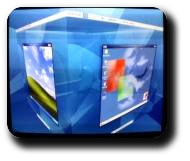Microsoft’s open-source contribution traced back to GPL violation
(Or: Things still make sense.)
Last week — just as Wayne Rosso stopped comparing RIAA to Stalin — M$ did its own volte-face and not only stopped calling GPL a “cancer” but decided to release some 20,000 lines of code carrying the plague itself. Pigs started flying. Some of the open-source evangelists started fantasizing about Microsoft as an ally suddenoutbreakofcommonsense and the cautious ones — who suspected some ulterior motive behind the move — were declared by them to be paranoid and rabid haters.
The storm didn’t last long though, as it was later reported that the change of heart was prompted by a GPL violation in Hyper-V. Some see this as a win for GPL. Some see this as a perfect backdrop for FUD against open-source (“it’s so goddamned viral it even infected us when we wanted interoperablity”) while some see this as a failure at M$’ part for not honestly explaining the reasons behind the code release. Whichever category you belong to, it’s nice to know that swine still have their feet firmly on ground.
Tags: GPL, Linux, Microsoft, Open Source, Technology






